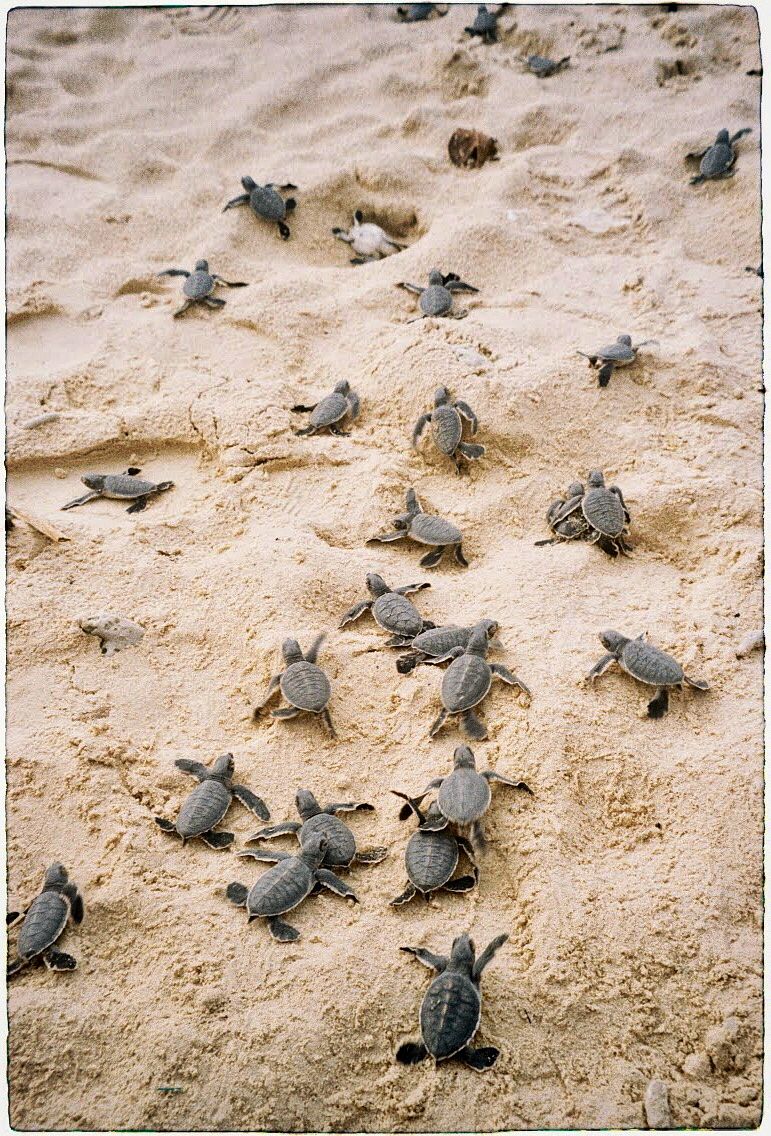
In July, I visited Con Dao National Park as part of a group of International Union for Conservation of Nature (IUCN) sea turtle volunteers to see first-hand conservation efforts aimed at the local sea turtle population.
In the top photo, a sea turtle heads back to the sea after completing her mission. There are five types of sea turtles in Vietnam, including the Green Turtle, Hawksbill, Olive Ridley, Loggerhead, and Leatherback Turtle. Green turtles are the most common species in Con Dao National Park. Con Dao includes the main island of Con Son, and numerous small islets. Bay Canh Islet has the most breeding turtles in Vietnam due to its long, beautiful beach.

Breeding can take sea turtles up to four hours. It's an exhausting process for them to come on shore and dig a half-meter-deep hole to lay eggs. During our visit, we could even hear the hard breathing of the females. During the breeding season, which runs from June to September, thousands of turtle eggs are laid on Bay Canh.

Only one out of 1,000 baby turtles survive to adulthood. Besides ocean pollution and the low natural survival rate, human activity is a huge threat to turtles. For example, turtle meat and eggs are sometimes served as a specialty to tourists.

Thinh, 24, is the youngest ranger at Con Dao National Park. In the above photo, he is laying turtle eggs in the incubation area after being brought from the beach. The global sea turtle population has plunged dramatically over the last 60 years due to hunting, and they need to be preserved before they go extinct. In addition, increasing global temperatures are directly affecting the turtle sex ratio, which means in the future there will be more female turtles than males. Turtle reproduction follows temperature-dependent sex determination, with lower temperatures during incubation yielding males while higher ones resulting in females.
Due to climate change, the incubation is divided into two areas. One part is kept under the shade, as lower temperatures produce more males, while the other section sits under natural light. Maintaining this arrangement will help to balance the gender ratio.

Rangers and volunteers check turtle nests in the incubation area. Each bamboo stick marks a turtle nest with a sequence number, the date they were laid, the number of eggs in the nest, and name of the ranger who brought the turtle eggs into the incubator. They must be extremely careful to not step on a turtle nest, and this is why tourists are not allowed to enter this space.

Turtle eggs take 45–60 days to hatch. Turtle nests are covered with baskets about one-two weeks before hatching. After hatching, the turtles dig out of the sand at the same time. The baskets help the rangers to collect the baby turtles in order to release them safely into the ocean.

New-born baby turtles can fast for one week. Once they reach reproductive age in 30 years, they will return to where they were born; a phenomenon that remains a mystery. Despite the low survival rates, we hope to see some of these baby turtles again on Bay Canh.











Đăng nhận xét